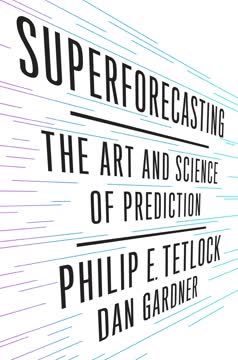Key Takeaways
1. Markets are powerful but flawed: A new approach is needed
Capitalism is blamed for increased inequality and slowing growth, yet no alternative has presented itself.
Market fundamentalism is outdated. While markets have been powerful engines of economic progress, they are increasingly failing to address key challenges like inequality, stagnation, and political polarization. The authors argue that these issues stem not from markets themselves, but from our outdated understanding and implementation of market principles.
A radical rethinking is required. Rather than abandoning markets or doubling down on existing approaches, the book proposes "Radical Markets" - institutional arrangements that allow fundamental market principles to play out more fully. This involves:
- Extending market logic to new domains (e.g. voting, immigration)
- Redesigning existing markets to be more competitive and efficient
- Using technology to create new forms of markets
The goal is to harness the power of markets while addressing their current shortcomings, creating a system that is both more productive and more equitable.
2. Property is monopoly: Common ownership self-assessed tax (COST) can help
Property Is Monopoly
Private property creates inefficiencies. While private ownership encourages investment, it also allows owners to hoard assets and charge monopoly prices, leading to underuse and misallocation of resources. This "monopoly problem" is pervasive and causes significant economic harm.
COST as a solution. The authors propose a Common Ownership Self-Assessed Tax (COST) system:
- Property owners self-assess the value of their assets
- They pay a tax on this self-assessed value (e.g. 7% annually)
- Anyone can purchase the asset at the self-assessed price
This system encourages accurate valuation and more efficient allocation of resources:
- Owners can't set prices too high (to avoid taxes) or too low (risking losing the asset)
- Assets more easily flow to those who value them most
- Society benefits from increased tax revenue and economic dynamism
While radical, COST could dramatically reduce inequality, increase productivity, and generate substantial public revenue.
3. Quadratic Voting: A radical solution for collective decision-making
QV allows citizens to express their views in a fundamentally richer and deeper way than 1p1v allows.
One person, one vote is flawed. Traditional voting systems fail to account for the intensity of people's preferences, leading to tyranny of the majority and other inefficiencies in collective decision-making.
Quadratic Voting (QV) as an alternative. QV allows people to express the strength of their preferences:
- Voters receive a budget of "voice credits"
- They can spend credits to buy votes on different issues
- The cost of votes increases quadratically (1 vote costs 1 credit, 2 votes cost 4 credits, etc.)
Benefits of QV:
- Allows minority groups with strong preferences to influence outcomes
- Encourages more informed and engaged citizenry
- Leads to outcomes that maximize overall social welfare
QV could be applied to various collective decisions, from referendums to corporate governance, potentially transforming democratic processes and addressing many current political dysfunctions.
4. Immigration reform: Visas between individuals program (VIP)
A political backlash against massive migration is not inevitable.
Current immigration systems are broken. They fail to capture the enormous potential economic gains from increased labor mobility while generating significant political backlash.
The Visas between Individuals Program (VIP). This proposal would allow citizens to directly sponsor migrants:
- Any citizen could sponsor a migrant worker
- Sponsors would be responsible for the migrant's basic needs and compliance with laws
- Sponsors would benefit from the migrant's labor or by placing them with employers
Benefits of VIP:
- Captures more of the economic gains from migration
- Distributes those gains more broadly among citizens of host countries
- Creates personal connections that can reduce anti-immigrant sentiment
- Allows for more flexible and responsive immigration levels
While radical, similar systems (like Canada's private sponsorship program for refugees) have shown promise. VIP could dramatically increase global productivity while defusing immigration as a political flashpoint.
5. Breaking up institutional investors: Restoring competition in corporate control
BlackRock, Vanguard, Fidelity, State Street. Most people might recognize the names of these companies, but hardly anyone knows what they do.
Institutional investors create hidden monopolies. Large asset managers like BlackRock and Vanguard own significant stakes in competing companies across entire industries. This common ownership reduces competition, potentially raising prices for consumers and suppressing wages.
A simple but powerful solution:
- Ban institutional investors from diversifying within industries
- Allow diversification across industries
- Set a 1% ownership cap for investors who want to own competing firms
Benefits:
- Restores competition within industries
- Maintains benefits of diversification for investors
- Improves corporate governance by giving institutional investors stronger incentives to monitor individual firms
This proposal would significantly reshape financial markets, but could lead to more dynamic and competitive industries, benefiting consumers, workers, and the broader economy.
6. Data as labor: Recognizing and compensating digital contributions
AIs run on ML systems that analyze piles of human-produced data.
The digital economy undervalues human contributions. Tech giants profit enormously from user-generated data, but users are not compensated for this value creation. This leads to inefficiencies and contributes to inequality.
Treating data as labor. The authors propose reconceptualizing data production as a form of work:
- Users should be paid for valuable data contributions
- This creates incentives for higher-quality data production
- It allows people to specialize in valuable forms of data work
Potential benefits:
- More efficient and innovative digital economy
- New source of income for many people
- Fairer distribution of gains from technological progress
While implementing this vision faces challenges, it offers a path to a more equitable digital future and could help address concerns about technological unemployment.
7. Radical Markets: A unifying vision for a more prosperous and equal society
Laissez faire (in its full true meaning) opens the way to the realization of the noble dreams of socialism.
A new synthesis is possible. The book's proposals aim to reconcile the seemingly opposed goals of market efficiency and social equality. By radically extending market principles, we can achieve many traditional left-wing objectives.
Key elements of the Radical Markets vision:
- More competitive and open markets in all spheres of life
- Broader distribution of capital ownership and returns
- Harnessing technology to create new forms of markets
- Empowering individuals through market mechanisms
Potential impacts:
- Dramatic reductions in inequality
- Increased economic dynamism and innovation
- More responsive and effective governance
- A more cohesive and cooperative society
While each proposal is powerful on its own, implemented together they offer a comprehensive reimagining of how to organize complex modern societies. This vision challenges both left and right to move beyond old debates and embrace a truly radical market system.
Last updated:
FAQ
What's Radical Markets about?
- Exploring Systems: Radical Markets by Eric A. Posner and E. Glen Weyl critiques current economic and political systems, focusing on capitalism and democracy's role in perpetuating inequality and social conflict.
- Proposing Reforms: The authors suggest innovative solutions like Quadratic Voting and the Common Ownership Self-Assessed Tax (COST) to create more equitable and efficient markets.
- Market Dynamics: The book argues for competitive and open markets, highlighting how monopolized or missing markets exacerbate inequality and stagnation.
Why should I read Radical Markets?
- Timely Issues: It addresses contemporary issues such as rising inequality, political polarization, and economic stagnation, making it relevant for today's readers.
- Innovative Ideas: The book challenges conventional wisdom with fresh perspectives, encouraging readers to rethink market and democratic structures.
- Engaging Content: Those interested in economics, political theory, and social justice will find the arguments thought-provoking and the solutions compelling.
What are the key takeaways of Radical Markets?
- Market Radicalism: The authors advocate for redesigning markets for equity and efficiency, contrasting with Market Fundamentalism's outdated capitalism notions.
- Quadratic Voting: This system allows individuals to express preference intensity, offering a nuanced approach to collective decision-making.
- COST: The Common Ownership Self-Assessed Tax aims to reduce monopoly power and promote efficient resource allocation.
What is Quadratic Voting as described in Radical Markets?
- Intensity-Based Voting: Quadratic Voting lets individuals buy votes based on issue importance, with costs increasing quadratically for more votes.
- Preventing Majority Tyranny: It ensures intense minority preferences are represented, preventing majority dominance in decision-making.
- Versatile Applications: The system can be applied to political elections and corporate governance, enhancing democratic processes.
What is the Common Ownership Self-Assessed Tax (COST)?
- Self-Assessment Taxation: COST allows individuals to self-assess property value, paying taxes based on declared value, discouraging monopolistic behavior.
- Efficient Resource Use: It encourages productive asset use or sale to those who will use them efficiently, improving economic efficiency.
- Public Revenue: Revenue from COST could fund public projects or be distributed as a social dividend, benefiting society.
How does Radical Markets address inequality?
- Market Structures and Inequality: The authors argue that current market structures concentrate wealth and power, proposing reforms for equitable wealth distribution.
- Promoting Competition: Open and competitive markets can expand economic opportunities, allowing more individuals to benefit from growth.
- Social Dividend: A social dividend funded by taxes like COST aims to provide basic income, reducing poverty and inequality.
What are the best quotes from Radical Markets and what do they mean?
- “The auction will set you free.”: This highlights the belief in market mechanisms, like auctions, to liberate individuals from monopolized resources.
- “Property is monopoly.”: It underscores the argument that traditional property ownership leads to monopolistic behavior, stifling competition.
- “Markets must be strengthened, expanded, and purified.”: This calls for rethinking market structures to serve the public good over entrenched interests.
How do the authors propose to unite the world’s workers?
- Global Labor Market: The book advocates for an open global labor market, allowing workers from poorer countries to migrate for better wages.
- Visas Between Individuals Program (VIP): This system would let citizens sponsor migrant workers, fostering personal and responsible host-migrant relationships.
- Economic Benefits: Facilitating migration can economically benefit both migrants and host countries, reducing global inequality.
What is the role of institutional investors in Radical Markets?
- Investor Power: Institutional investors control significant market portions, influencing corporate behavior and dynamics.
- Reform Need: Concentrated power among these investors can harm consumers and workers, necessitating reforms for competition and accountability.
- Market Solutions: Giving investors more control over individual companies, rather than industries, could restore competition and improve outcomes.
How does Radical Markets envision the future of democracy?
- Radical Democracy: Quadratic Voting is proposed to enhance democratic decision-making, allowing citizens to express preference intensity.
- Balancing Interests: The system aims to prevent majority tyranny and promote compromise by letting individuals allocate voting power based on issue importance.
- Civic Engagement: Such a system could foster greater civic engagement and trust in democratic institutions, leading to a healthier political landscape.
What are the potential challenges to implementing the ideas in Radical Markets?
- Resistance to Change: Radical reforms may face political and social resistance from those benefiting from the current system.
- Implementation Challenges: Systems like COST and QV require careful planning, testing, and scaling to avoid disruption.
- Cultural Shifts: A cultural shift in views on property, markets, and democracy is necessary, which could take time and effort.
What are the implications of treating data as labor in Radical Markets?
- Empowering Individuals: Recognizing data as labor values user-generated content, suggesting compensation for data contributions.
- Challenging Business Models: It critiques the model where tech companies profit from user data without fair compensation, calling for reevaluation.
- New Opportunities: This perspective could create economic opportunities, allowing individuals to monetize online activities and address inequality.
Review Summary
Radical Markets receives mixed reviews, with praise for its thought-provoking ideas and critiques of current economic systems. Readers appreciate the book's ambition in proposing radical solutions to address inequality and market inefficiencies. However, some find the proposals impractical or potentially harmful. The book's strengths lie in challenging conventional thinking and sparking discussions about alternative economic structures. Despite concerns about implementation, many reviewers value the book's contribution to economic discourse and its potential to inspire new approaches to societal problems.
Similar Books









Download PDF
Download EPUB
.epub digital book format is ideal for reading ebooks on phones, tablets, and e-readers.




